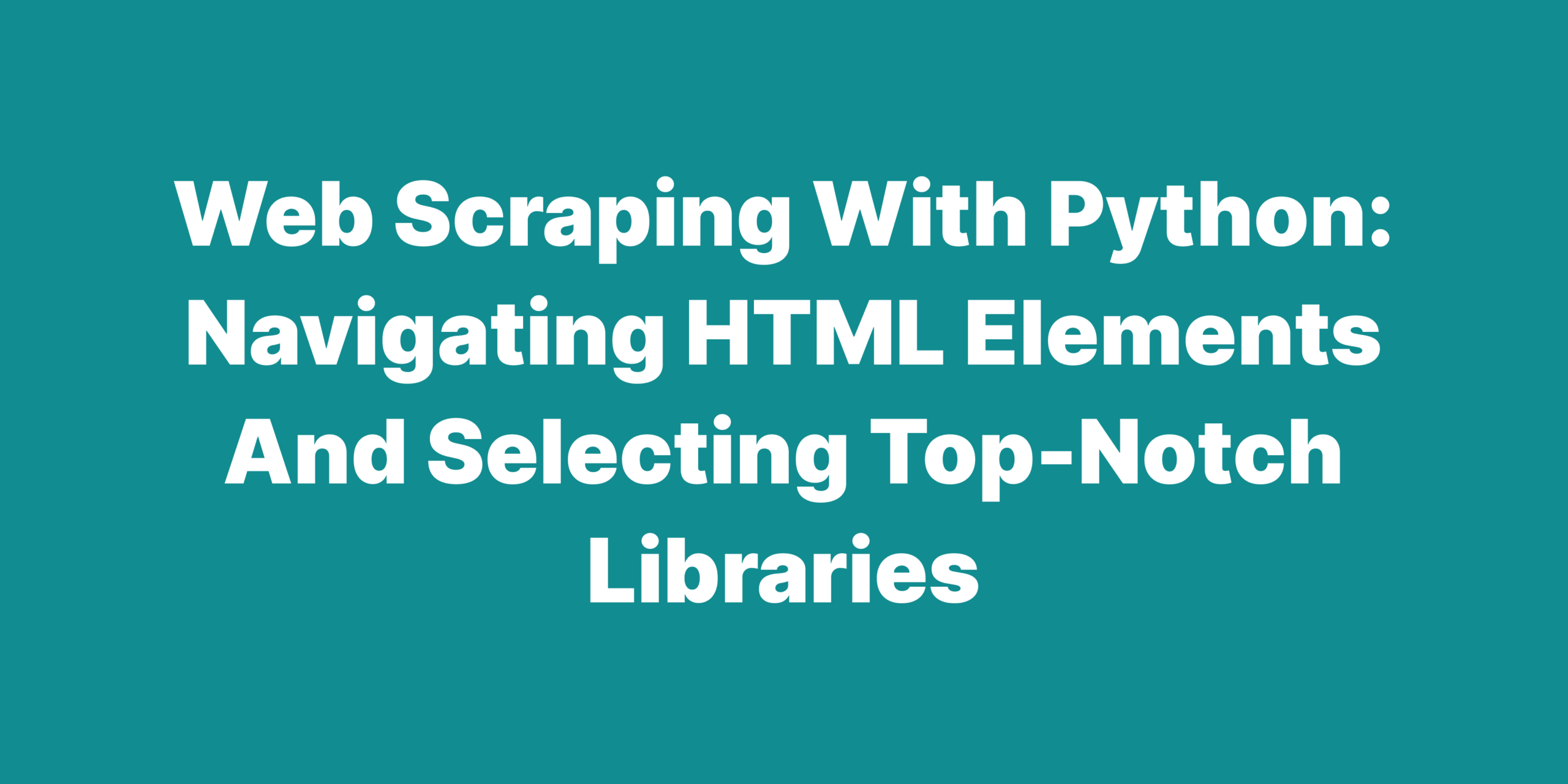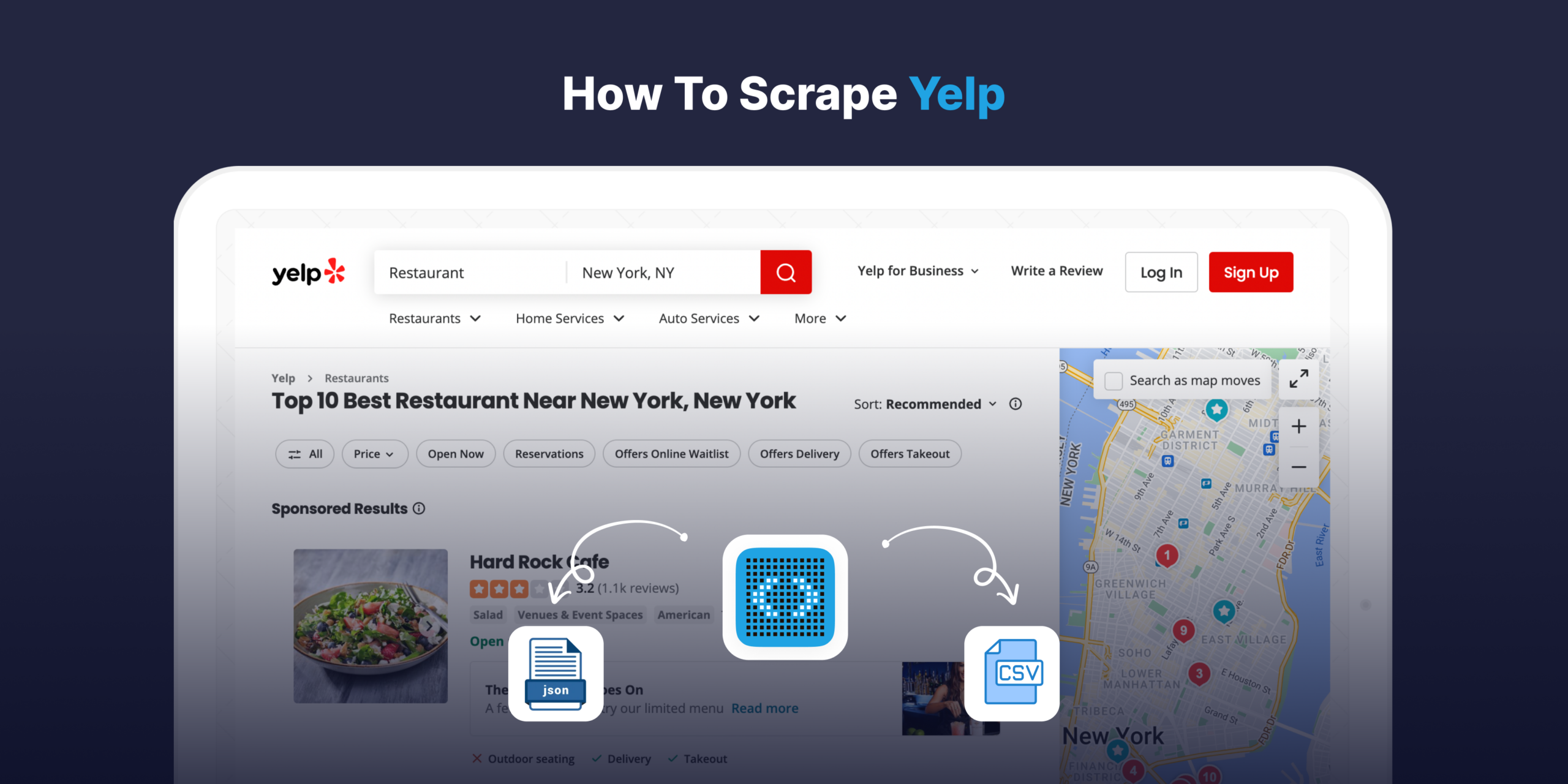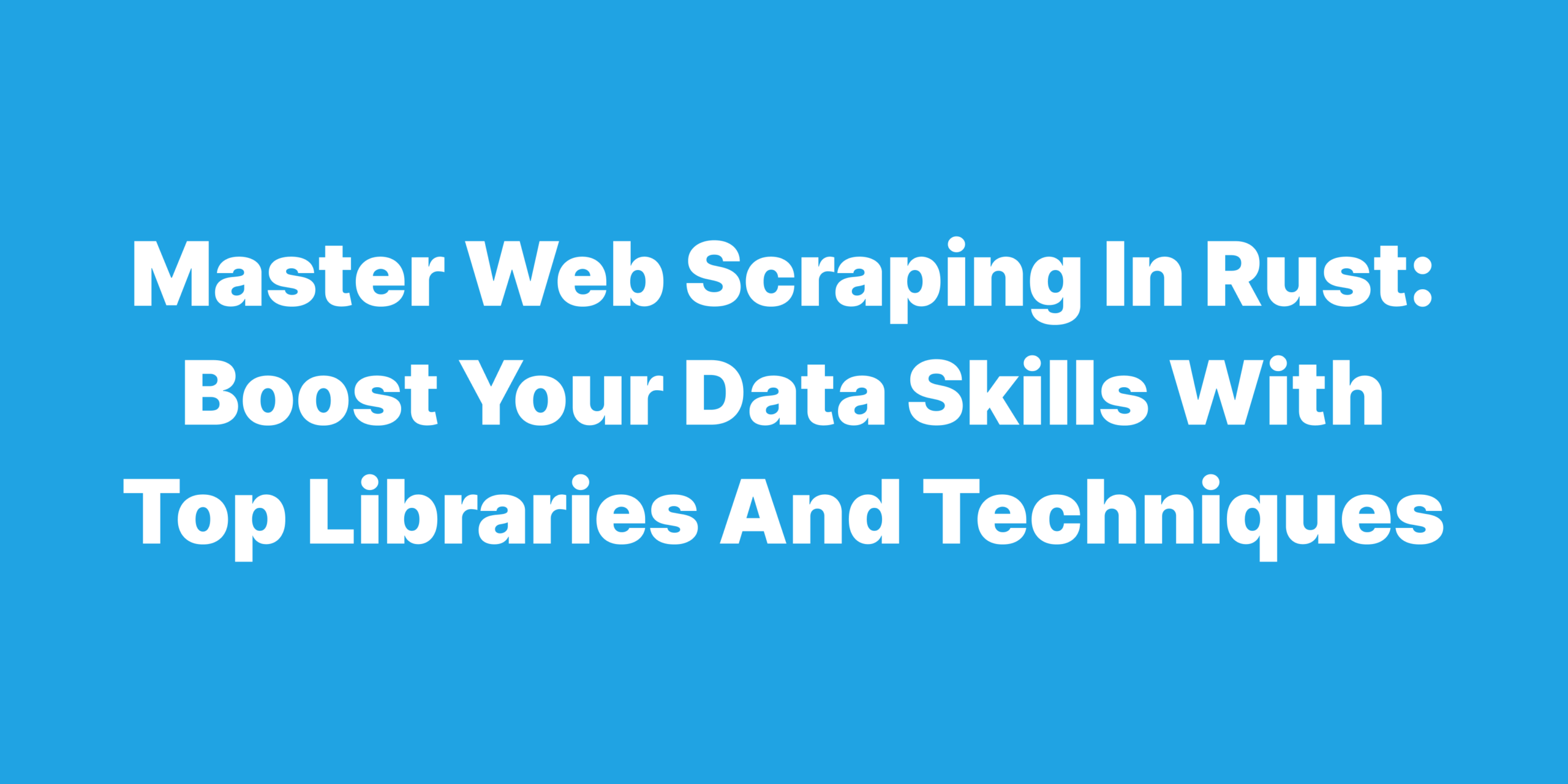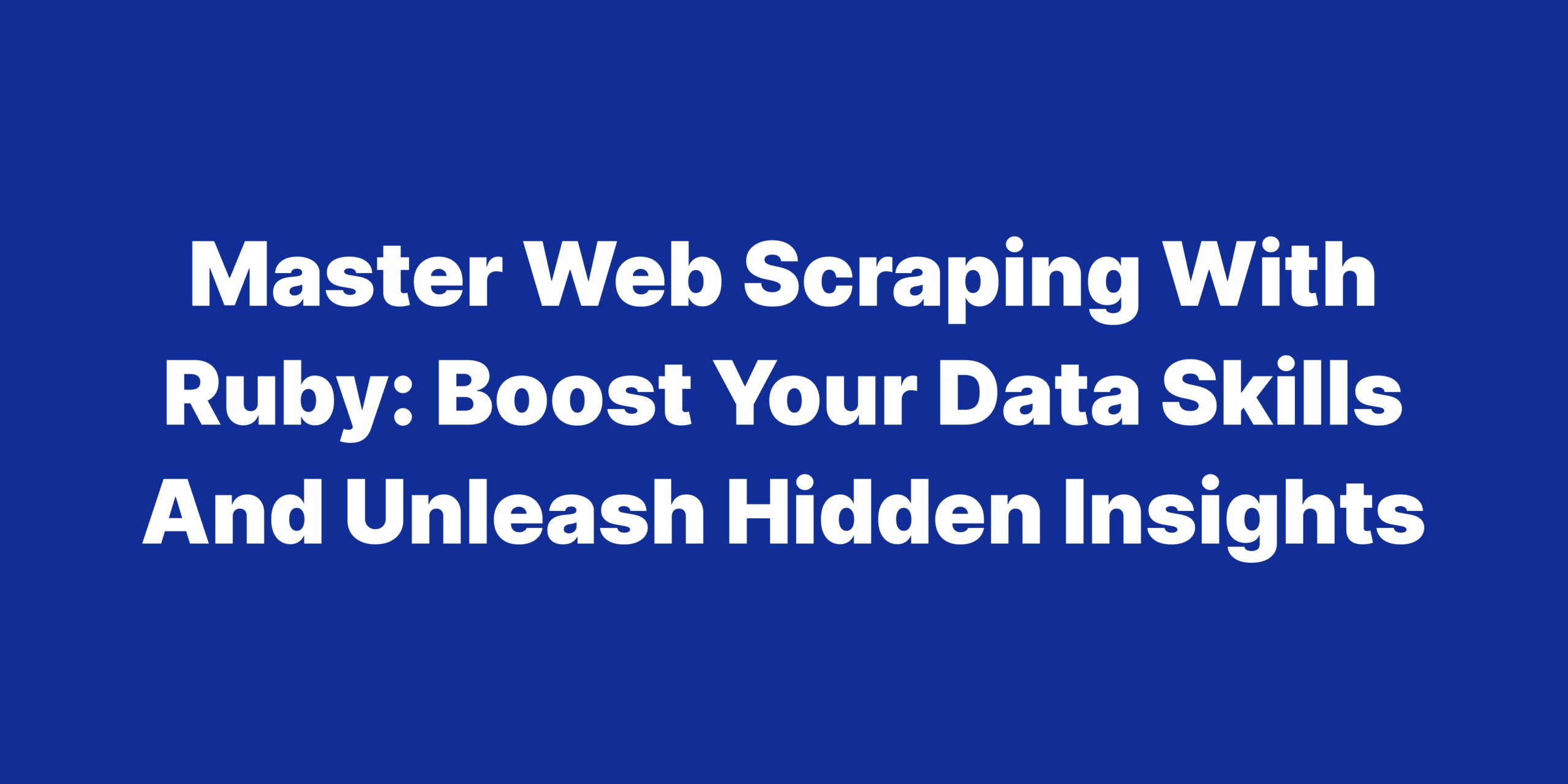For those of us who thrive on harvesting and dissecting data, the realm of web scraping with Python has been a game-changer. The ability to extract vast amounts of information from the web with just a few lines of Python code has opened up new avenues for data analysis and insight. In this comprehensive guide, I’m excited to share how you can identify HTML elements by their IDs, introduce the top five Python libraries that make web scraping a breeze, and take you through the steps to create your web scraper for fetching page HTML in Python. Gear up to take your data analysis skills to new heights with the powerful technique of web scraping. Whether you’re looking to compile market research, track competitive data, or simply gather information from the web, this article will set you on the path to becoming a proficient web scraper with Python.
Identifying HTML Objects by ID in Python
HTML objects are the foundational building blocks of any web page, comprising various elements like headings, paragraphs, images, and tables. These elements provide structure and meaning to the content, making it easily accessible and interpretable by both humans and machines. In web scraping, the identification of HTML objects is crucial as it enables data extraction from specific elements within a web page. By precisely targeting the desired elements, you can efficiently retrieve the relevant information, making your web scraping project more accurate and valuable.
To identify HTML objects by ID in Python, you’ll need to employ a web scraping library like Beautiful Soup or lxml. These libraries allow you to parse the HTML content of a web page and navigate its structure. HTML elements often have a unique attribute called ‘id,’ which can be used to locate and access them. Using Python, you can search for an element by its ID and extract its content or attributes. This technique is particularly useful when dealing with complex web pages, as it helps you zero in on the exact information you need.
Here’s an example of identifying HTML objects by ID in Python using Beautiful Soup. First, you would import the necessary libraries and fetch the HTML content of the web page:
from bs4 import BeautifulSoup
import requests
url = 'https://example.com'
response = requests.get(url)
soup = BeautifulSoup(response.text, 'html.parser')
Next, let’s assume there’s a paragraph element on the web page with an ID of ‘target-text.’ You can locate and extract its content using the following code:
paragraph = soup.find('p', {'id': 'target-text'})
print(paragraph.text)
By employing this approach, you can quickly and effectively identify HTML objects by their IDs, streamlining your web scraping process and ensuring the extraction of accurate and relevant data.
The 5 Best Python Libraries For Web Scraping
Beautiful Soup is a widely-used Python library for web scraping and parsing HTML and XML documents. It provides a simple and intuitive API, making it easy for beginners to get started.
Beautiful Soup
Outscraper services are among the best alternatives for retrieving Google Search results. Outscraper offers two services, Outscraper Google Search Results Scraper and Outscrpaer Google search API, that allow you to scrape results without limits.
Pros
- Easy to use and beginner-friendly
- Parses both HTML and XML
- Good documentation and community support
Cons
- Slower compared to other libraries
- Not a standalone library (requires an additional parser like lxml)
LXML
lxml is a powerful and high-performance library for parsing XML and HTML documents. It’s built on top of the C libraries libxml2 and libxslt, resulting in increased speed and efficiency.
Pros
- Fast and efficient
- Parses both HTML and XML
- Compatible with both XPath and CSS selectors
Cons
- A steeper learning curve for beginners
- Less intuitive API compared to Beautiful Soup
Selenium
Selenium is a web testing library that automates browser actions, making it ideal for scraping dynamic websites that rely on JavaScript to load content.
Pros
- Handles JavaScript rendering
- Automates browser actions, allowing interaction with web pages
- Supports multiple programming languages and browsers
Cons
- Slower than other libraries, as it controls a full browser instance
- Requires more system resources
- Overkill for simple, static websites
Scrapy
Scrapy is an open-source and collaborative web crawling framework for Python. It’s designed to handle large-scale web scraping projects and offers advanced features for data extraction and processing.
Pros
- Powerful and flexible framework
- Built-in support for handling various data formats and storage options
- Extensive documentation and community support
Cons
- Not suitable for beginners or small-scale projects
- Can be overwhelming due to its advanced features
PyQuery
PyQuery is a web scraping library inspired by jQuery, allowing you to make queries on XML documents using CSS selectors. It provides a familiar syntax for those who have experience with JavaScript and jQuery.
Pros
- Familiar syntax for JavaScript/jQuery users
- Lightweight and easy to use
- Supports CSS selectors
Cons
- Limited features compared to other libraries
- Not as widely used, resulting in less community support and resources
In conclusion, the best library for your web scraping project in Python depends on your specific requirements, familiarity with the libraries, and the complexity of the websites you plan to scrape. Each library offers its own unique advantages and drawbacks, so it’s essential to weigh these factors carefully before making a decision.
Building a Web Scraper to Scrape Page HTML in Python
Building a web scraper in Python involves creating a script that can access, navigate, and extract information from web pages. By leveraging Python’s libraries and tools, you can efficiently and effectively collect data from websites for various purposes, such as data analysis, machine learning, or content aggregation. A well-crafted web scraper not only retrieves the desired information but also ensures that the extraction process is both accurate and reliable.
- Choose a web scraping library: Pick a suitable library for your project, such as Beautiful Soup, lxml, or Selenium, depending on your requirements and the website’s complexity.
- Fetch the web page: Use the ‘requests’ library to download the web page’s HTML content.
- Parse the HTML: Utilize your chosen web scraping library to parse the HTML content and navigate the page structure.
- Extract the data: Identify the HTML elements containing the desired information and extract their content or attributes.
- Clean and process the data: Perform any necessary data cleaning, transformation, or validation steps.
- Store or export the data: Save the extracted data in your preferred format (e.g., CSV, JSON, or a database).
Here’s an example of building a web scraper in Python using Beautiful Soup to extract the titles of articles from a blog page:
from bs4 import BeautifulSoup
import requests
url = 'https://example-blog.com'
response = requests.get(url)
soup = BeautifulSoup(response.text, 'html.parser')
# Assume the article titles are in <h2> elements with a class 'article-title'
titles = soup.find_all('h2', {'class': 'article-title'})
for title in titles:
print(title.text)In this example, the ‘requests’ library is used to fetch the HTML content of the blog page, and Beautiful Soup is utilized to parse the HTML and find the <h2> elements containing the article titles. The extracted titles are then printed to the console. This simple web scraper demonstrates how to access, navigate, and extract data from a web page using Python.
Parsing HTML Code with Python Library
Parsing HTML code involves breaking down a web page’s HTML content into a structured format that can be easily navigated and manipulated programmatically. It’s a crucial step in web scraping, as it allows you to access the relevant information within a web page and extract it for further analysis or processing. By correctly parsing the HTML code, you can efficiently locate and retrieve the desired data, ensuring the accuracy and reliability of your web scraping project.
Python offers several libraries to help you parse HTML code effectively, with Beautiful Soup and lxml being two of the most popular options. Beautiful Soup provides a user-friendly and intuitive API, making it a preferred choice for beginners, while lxml delivers high performance and speed due to its C library foundation. Both libraries support HTML and XML parsing and enable you to navigate a web page’s structure using either CSS selectors or XPath expressions. When choosing a library, consider factors such as ease of use, performance, and compatibility with your project’s requirements.
Here are two examples of parsing HTML code with Python libraries, using both Beautiful Soup and lxml.
Beautiful Soup Example
from bs4 import BeautifulSoup
import requests
url = 'https://example.com'
response = requests.get(url)
soup = BeautifulSoup(response.text, 'html.parser')
# Accessing an element using its tag
title = soup.title.text
print(f'Title: {title}')LXML Example
from lxml import html
import requests
url = 'https://example.com'
response = requests.get(url)
tree = html.fromstring(response.text)
# Accessing an element using XPath
title = tree.xpath('//title/text()')[0]
print(f'Title: {title}')In both examples, the ‘requests’ library is used to fetch the HTML content of a web page. Beautiful Soup and lxml are then employed to parse the HTML and extract the page title. While Beautiful Soup relies on tag-based navigation, lxml utilizes XPath expressions to locate elements within the web page structure. Each library offers a unique approach to parsing HTML code, enabling you to choose the method that best suits your needs and preferences.
Conclusion
In this article, we explored various aspects of web scraping in Python, starting with identifying HTML objects by ID and introducing the top 5 Python libraries for web scraping. We also delved into the process of building a web scraper to extract page HTML in Python and discussed parsing HTML code using Python libraries. Throughout the article, we provided examples and code snippets to illustrate how these techniques can be applied in real-world scenarios, enabling you to extract valuable data from websites and transform it into actionable insights.
Web scraping has become an indispensable tool in today’s data-driven world, allowing individuals and businesses to gather crucial information from the vast ocean of online content. From data analysis and machine learning to sentiment analysis and market research, web scraping empowers users to make well-informed decisions, identify trends, and gain a competitive edge. By leveraging Python’s extensive ecosystem and powerful libraries, you can develop efficient and reliable web scrapers that cater to your specific needs and requirements.
As we move forward, web scraping will continue to evolve, with new technologies and techniques emerging to tackle the ever-changing landscape of the internet. As a Python developer, it’s crucial to stay updated on the latest developments in web scraping libraries and best practices, ensuring that your skills remain relevant and adaptable. Embrace the power of web scraping in Python, and continue to explore its vast potential to unlock new possibilities and opportunities in your data analysis journey.
Frequently Asked Questions
What is the importance of identifying HTML objects by ID in web scraping?
Identifying HTML objects by ID is crucial in web scraping because it allows you to target specific elements within a web page and extract the relevant information efficiently. This ensures the accuracy and value of the data extracted from websites
What factors should I consider when choosing a Python library for web scraping?
When choosing a Python library for web scraping, consider factors such as ease of use, performance, compatibility with your project requirements, and the complexity of the websites you plan to scrape. Also, consider the library’s documentation, community support, and any unique features it offers.
How can I build a web scraper to extract page HTML in Python?
To build a web scraper in Python, follow these steps: choose a web scraping library, fetch the web page using the ‘requests’ library, parse the HTML using your chosen library, extract the desired data from the HTML elements, clean and process the data, and store or export the data in your preferred format.
What are the key differences between Beautiful Soup and lxml for parsing HTML code in Python?
Beautiful Soup is a user-friendly and intuitive library, making it suitable for beginners, while lxml is faster and more efficient due to its foundation on C libraries. Both libraries support HTML and XML parsing and allow navigation using CSS selectors or XPath expressions. The choice between Beautiful Soup and lxml depends on factors like ease of use, performance, and compatibility with your project requirements.
How can I stay updated on the latest developments in web scraping libraries and best practices?
To stay updated on the latest developments in web scraping libraries and best practices, follow relevant blogs, forums, and online communities, attend web scraping-related conferences and workshops, and engage with fellow developers and experts in the field. This will help you keep your skills relevant and adaptable in the ever-evolving landscape of web scraping.






